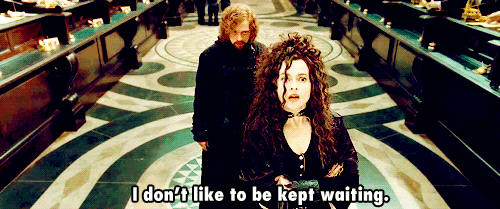The very thought of shopping on Black Friday gives me anxiety – and not due to the fear of getting clocked in the face (though that would also suck).
Anyone who knows me is well aware that lineups are literally the bane of my existence. I just can’t. No deal has ever been worth it to endure the lineups on Black Friday, Boxing Day, or any other day for that matter.
Whether it means six people in line in front of me at the bank, a dozen people in line for a food station at an event, or – worst of all – hundreds of people ahead of me in line for customs at the airport, I will be the first to admit that lineups bring out a side of me that isn’t exactly pretty. But, hey, I know I’m not alone.
And that’s because it turns out our negative perceptions of lineups goes well beyond a sense of entitlement and battiness (I knew it), or even the duration of the wait.
As highlighted in a recent Washington Post article, what people hate most about lines likely isn’t the length of the wait at all. They point to numerous studies that show how people feel when they wait in line is often a lot more important than the duration of the wait itself.
For example, waiting in line is usually made worse when there is nothing else to do but stare at the back of the head of the person in front of you. For that reason, some companies are turning to tactics designed to distract and entertain those in line. This includes everything from TV screens and music, to mirrors next to elevators. It makes sense; what makes those lengthy customs lines at the airport even worse is the fact that you can’t even distract yourself with your cell phone.
But the whole psychology of waiting in line goes beyond the need to control basic boredom. The Washington Post highlights research that suggests that the most common problems with waiting in line are anxiety, stress, and uncertainty.

So, if you’re prone to anxiety already, the sight of a lineup may trigger it (and you probably need to pop an Ativan before you hit the airport, theme park, or the passport office). As the Post points out, anxiety is made even worse when you can’t see or monitor the line (and even worse when you’re on the phone with one of the country’s “reliable” cell phone providers). That’s why companies like Disney World offer estimated wait times (which are suspected to be purposely longer than they actually are).
When it comes to the science of lineups, the Post points to research that suggests that people have a tolerance for waiting that is proportional to the complexity or quantity of service that they themselves anticipate. The common example is the grocery store: if you have a cart full of groceries, you won’t mind if the person in front of you does as well. But if you have one or two items, it’s a whole different story, and you silently curse the heavy shopper ahead of you (if not, you’re a better human than I am).
Of course, another important factor to consider is the speed and pacing of the line. The Post points to research by Daniel Kahneman, which argues that consumers become gradually disheartened as they wait, but have a positive response to each forward movement of the line (however small that may be). Their sentiment about the whole experience depends on how the two responses balance out. How we remember a line is also influenced by how the experience ends.
From a business point of view, in general, the Post suggests that our experience of waiting in line is all about perception, which can be easily manipulated. From a consumer perspective, if lineups aren’t your thing, you may need to ask yourself whether the thing you’re waiting in line for is even worth it.
Tip: if it’s to get into an already overcrowded bar, it probably isn’t.
[ad_bb1]

